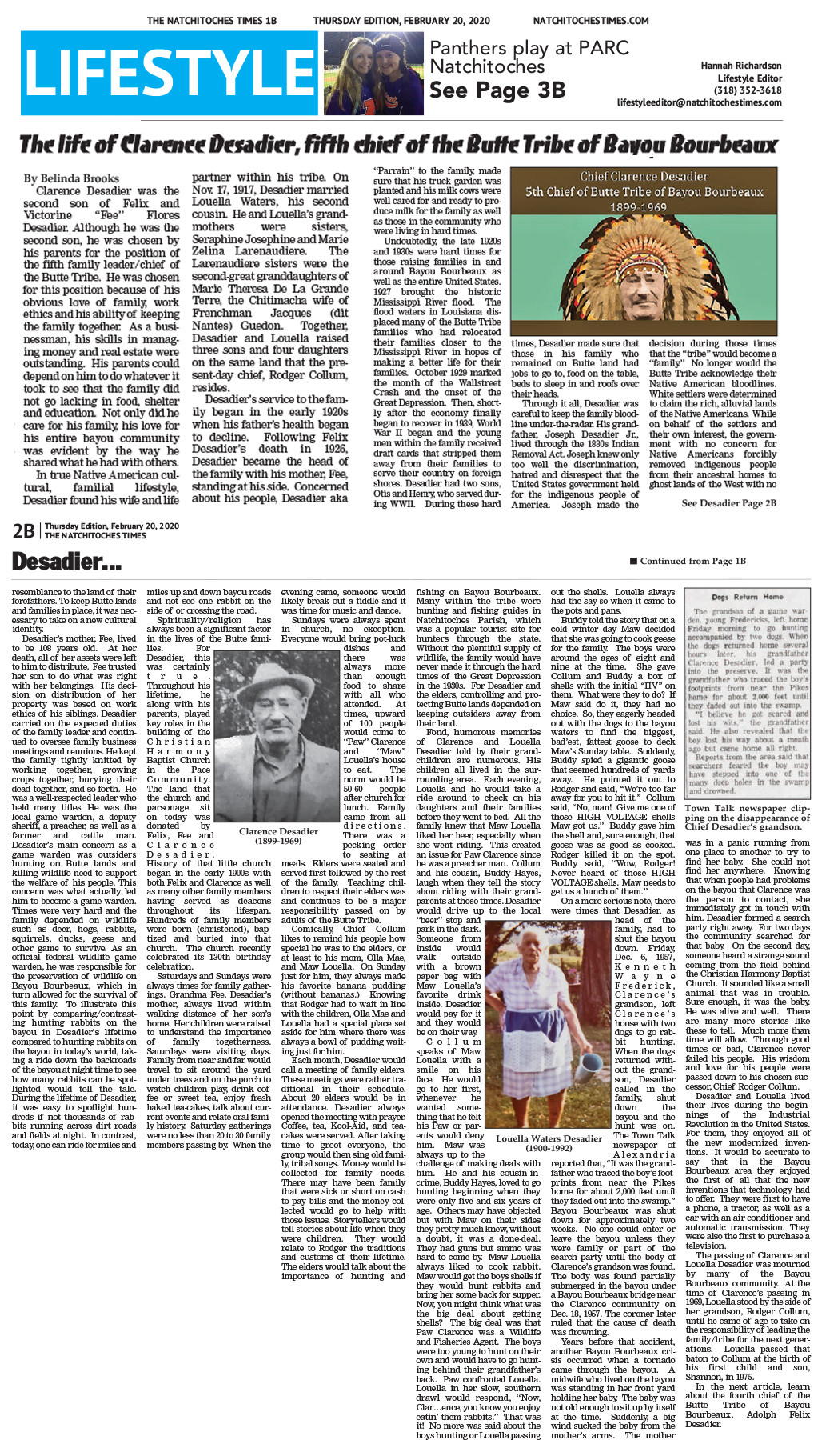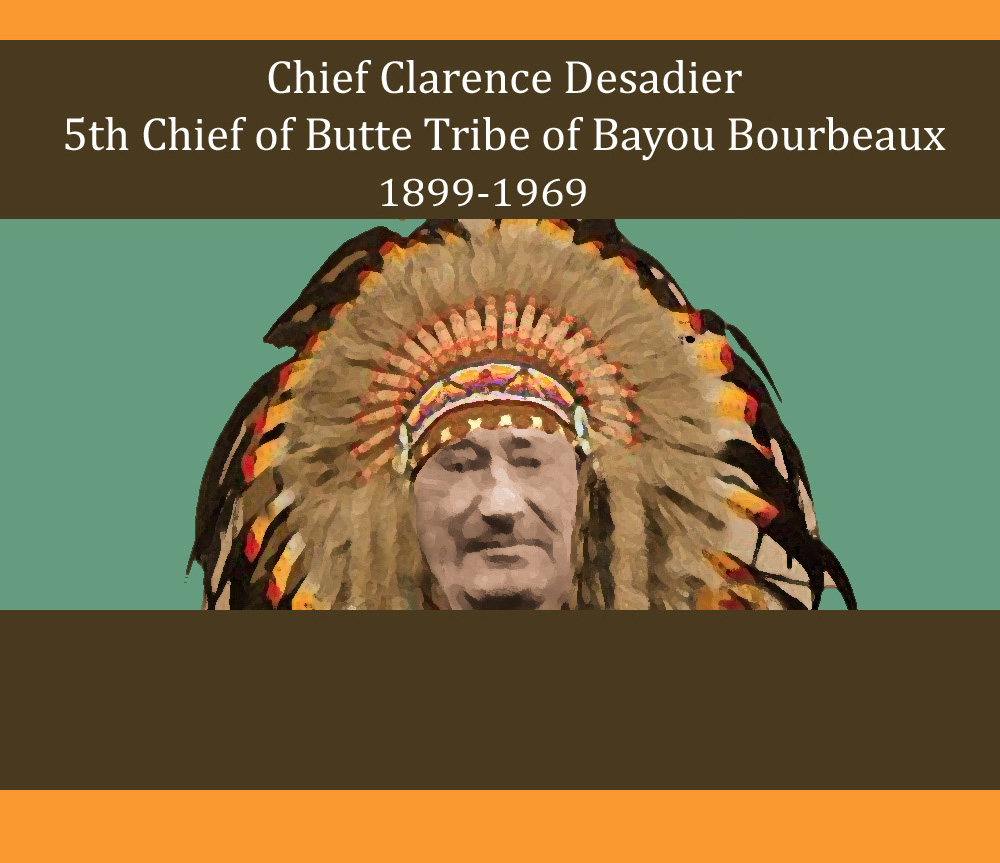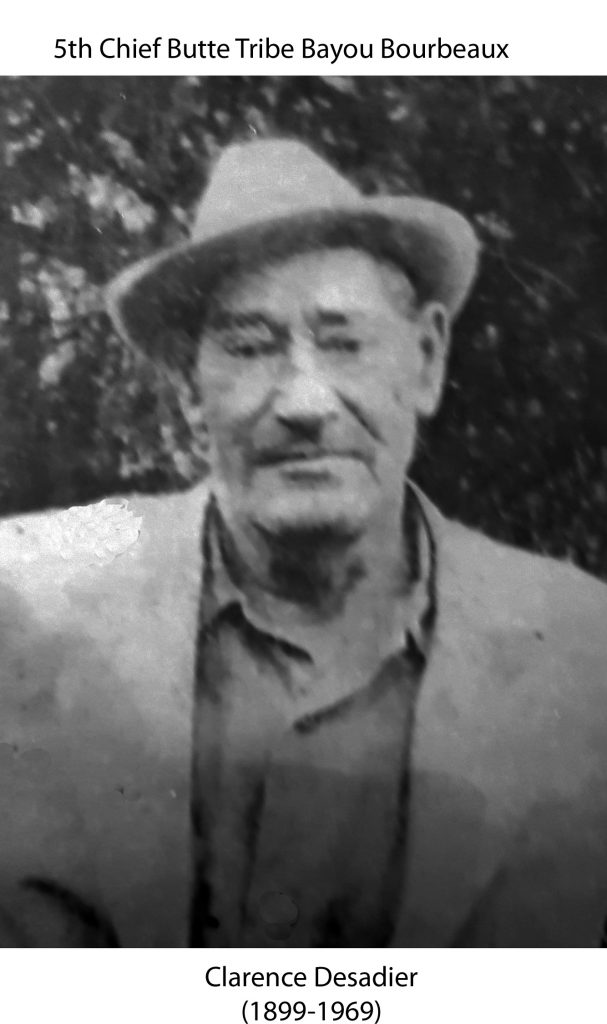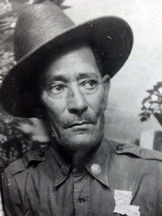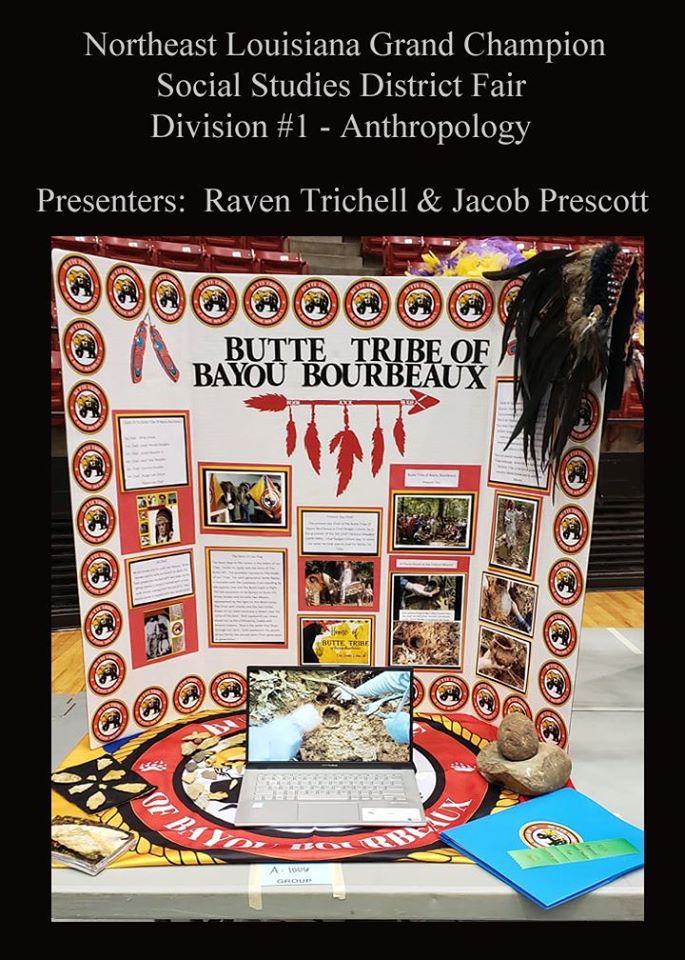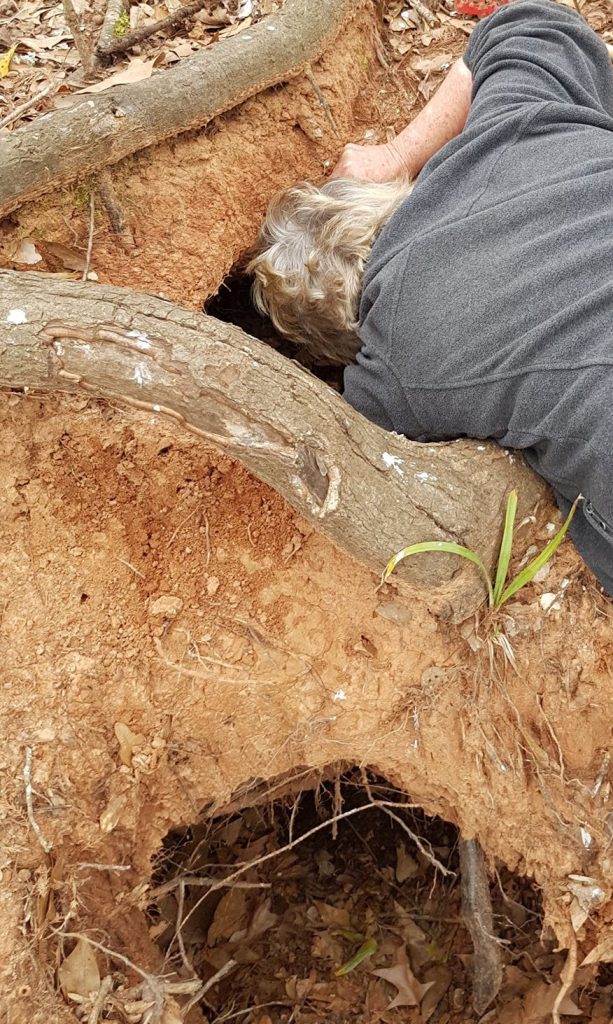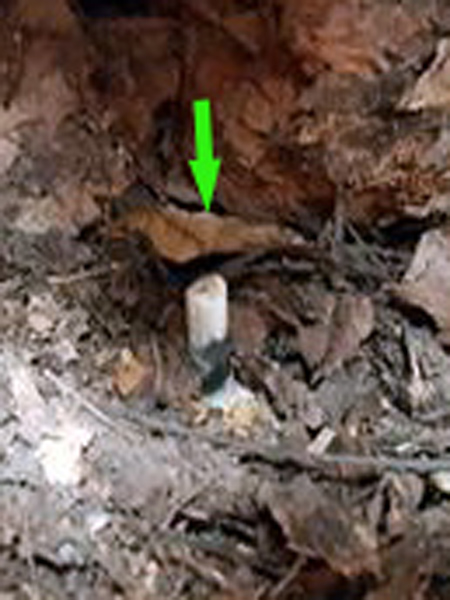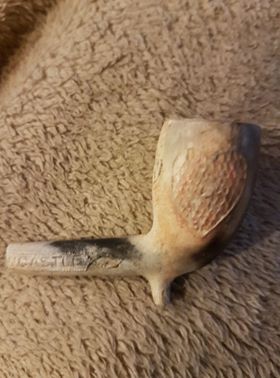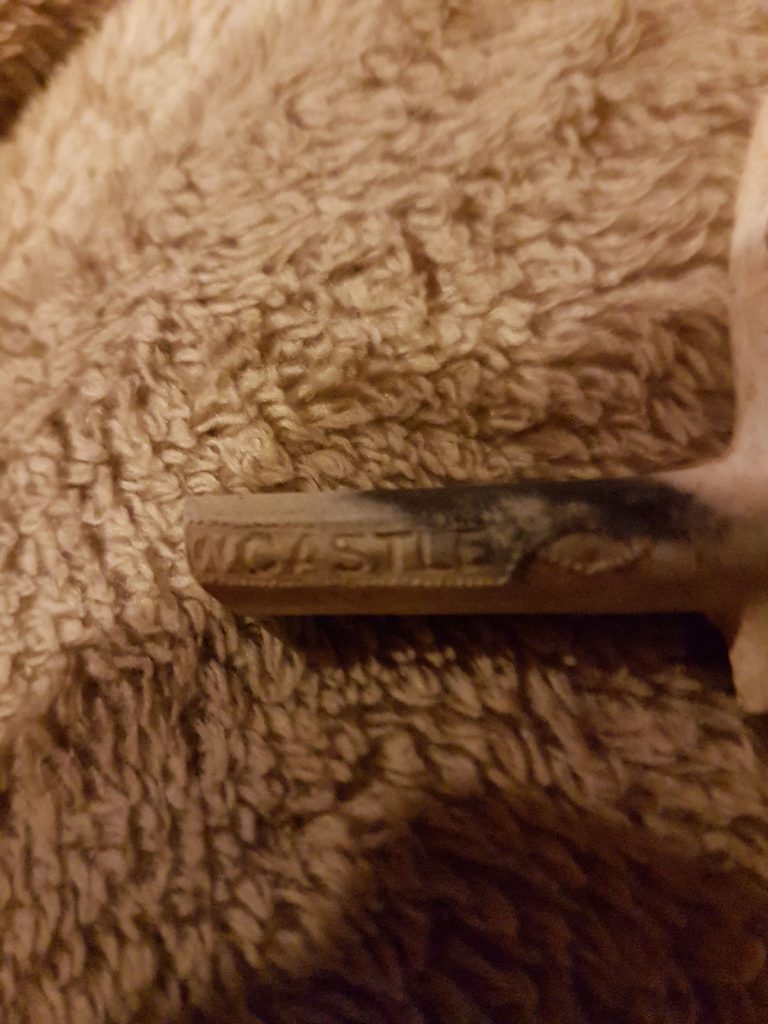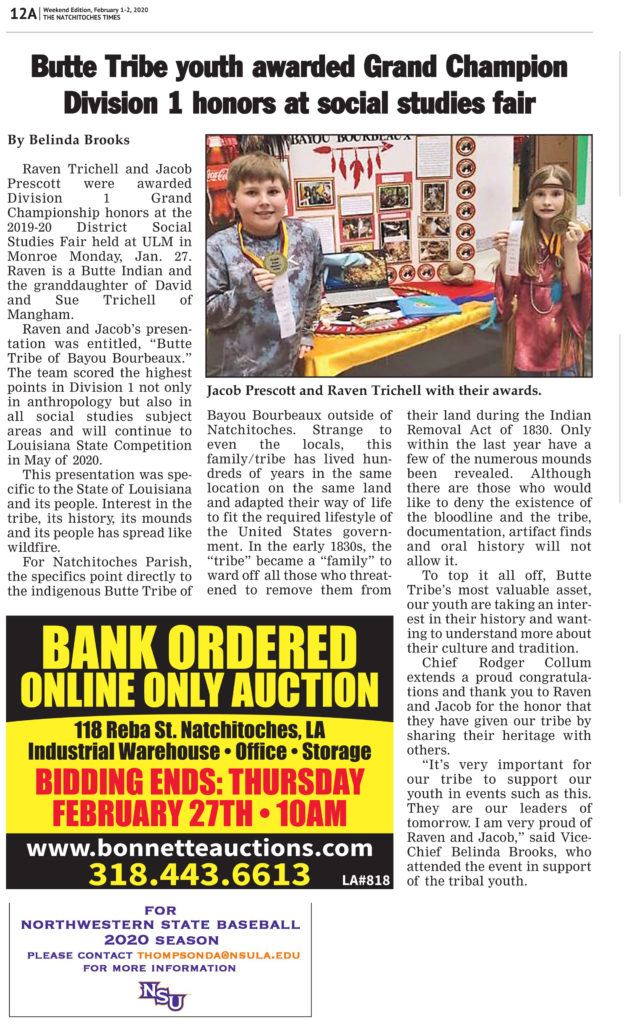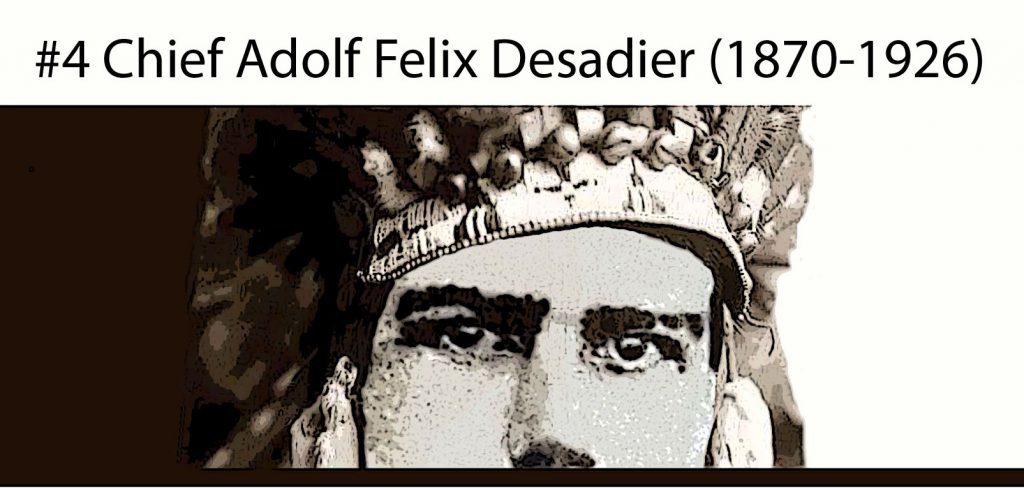
Written by: Belinda Brooks
Oral History by: Rodger Collum
Adolf “Felix” Desadier was the seventh child (third son) of Joseph and Seraphine “Josephine” Ann LaRenaudiere Desadier. He was born on December 5, 1870, in Natchitoches, Louisiana. Felix grew up under the tutorship of his father Joseph Desadier Jr (1832-1906). Joseph grew up during the years of the Indian Removal Act of 1830 and remembered well the injustices that were poured upon his people. Therefore, Felix’s generation was born a short time after the Civil War ended in 1864. For the Butte Indians during this era, President Lincoln’s views on Native Americans left them with little hope of human rights, much less citizens’ rights within the United States. In a speech delivered in 1859 at the Illinois College in Jacksonville, Lincoln stated that the United States “owns a large part of the world, by right of possessing it; and all the rest by right of wanting it, and intending to have it.”
TRIBE CHANGED TO FAMILY
Without a doubt this was the main topic of discussion when it came to the survival of the tribe. The views of the United States government had not changed when it came to the indigenous people of America. Therefore, the decision was clear where the Butte Tribe must stand on the topic of survival. They would become the Butte “Family” of Bayou Bourbeaux rather than the Butte Tribe by order of Chief Joseph Desadier Jr. In other words, the family must assimilate to the ways of the United States government or risk losing everything that had been passed down to the family from their ancestors.
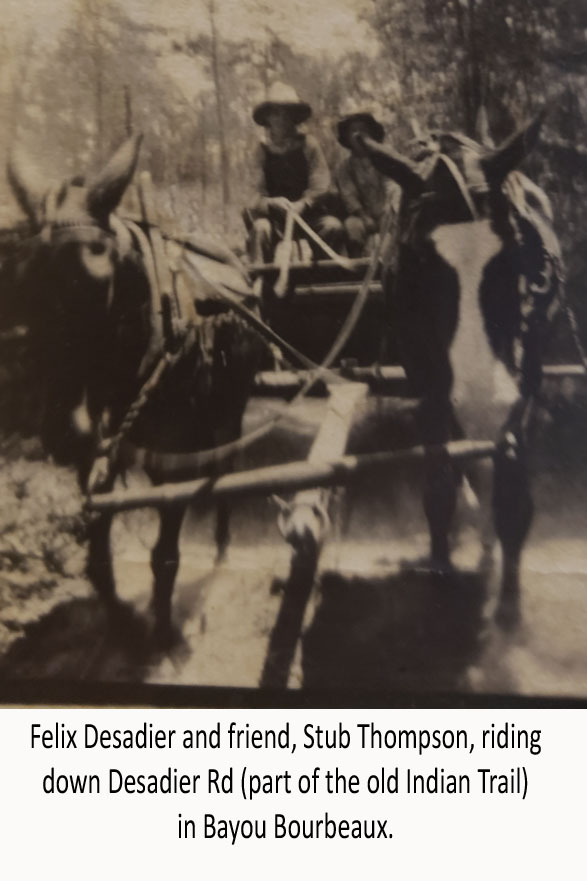
PRAIRIE LANDS & INDIAN TRAILS
Felix Desadier was the last Butte Chief to live his life on the prairie lands of Bayou Bourbeaux area in Natchitoches Parish. For those who are not knowledgeable concerning the history of the prairie grasslands in the Bayou Bourbeaux area, it will be surprising for them to learn that the lakes of the area are actually man-made. Before the 1930s, the land was a vast prairie. For hundreds, maybe thousands, of years through the beginnings of the 1830s and the Indian Removal Act, thousands of buffalo roamed those prairie grasslands. Not only that but also, Bayou Bourbeau, specifically Chivery Dam, was the vertex where all the Indian Trails met at the Collum Temple Mounds. The land itself tells the tale.
Right off of the prairie grassland near Bayou Bourbeaux, known today as Prairie Lake, Native Americans physically hauled tons and tons of white sand from the hills about three miles away to make sandhills for the buffalo to roll in. These sand dunes were called “The Licks.” Buffalo were constantly trying to brush off flies, bugs, ticks and other parasites. When this happened, the Indians were sitting in wait to kill the buffalo as the buffalo were in an unsuspicious state of defense. Today, hundreds of years after the prairie lands have been covered with water in what is now known as Prairie Lake in Natchitoches Parish, one can get a still glimpse the remains of “The Lick’s” white sand and find arrowheads that were used in attempts to kill buffalo that wallowed in sand when waters of the lake are low.
Another feature of Butte territory that marked the importance of its people were the Indian trails that led to what is known today as the Collum Temple Mound. Three trails led out from the temple mound which sat on a creek which is today Chivery Dam. These three trails led to Winn Parish, Campti and Goldonna (Salt Licks). Native Americans marked the trails with bent trees which are still visible today. Butte Hill was/is located on the Indian trails. The only other waterways were Seline and Black Bayou. It made sense that the trails would lead to the temple mound because the Butte territory was a hot-spot for indigenous travel across Americas. As visiting natives would approach a Butte native village, they would first go to the temple mound, pray and leave their gift, then visit the village. The evidence of numerous Native American villages and mounds all-encompassed the Butte area.
Along with the Licks, Butte Hill and the Indian Trials, another feature of Bayou Bourbeaux was Jewel Springs. Jewel Springs was/is considered a mystic, healing springs. All of the Butte chiefs used the spring for healing purposes. They would often take their family there to picnic and spend a family day. Should someone become deathly ill or accidently hurt, they would go to the springs to wash in the healing waters. Chief Collum reports that he makes trips to the spring when the weather and the land is approachable.
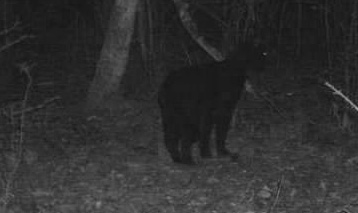
HUNTER, TRACKER, GUIDE
It was no secret that Felix was an avid hunter, tracker, and guide. He loved nature and animals. Felix was known for having beautiful horses. too. He rode a giant16.5 hands white horse. Rodger was told a story by his elders about Felix at twelve years old. For several weeks Felix and his father had been finding dead calves scattered around the farm land. There was obviously a rogue-cat on the loose thrill-killing helpless animals. Normal big-cat kills would consist of making a kill, eating whatever the cat wanted of the kill, dragging what was left over to a safe place, covering the left-overs with grass or other such objects, and returning to eat the remains at another time until it was all consumed. This cat killed calves, ate what he wanted and left the remains to the buzzards. Felix’s tracking skills were excellent. By now, Felix knew the cat was obviously a rouge-panther. With his father’s permission, he headed out on the trails with full intentions of returning home with the pelt of the offending cat. He tracked the cat for three days and nights. On the late morning of the third day, he found the cat laid up in a den of branches, straw and grass. One good shot and the cat was history.
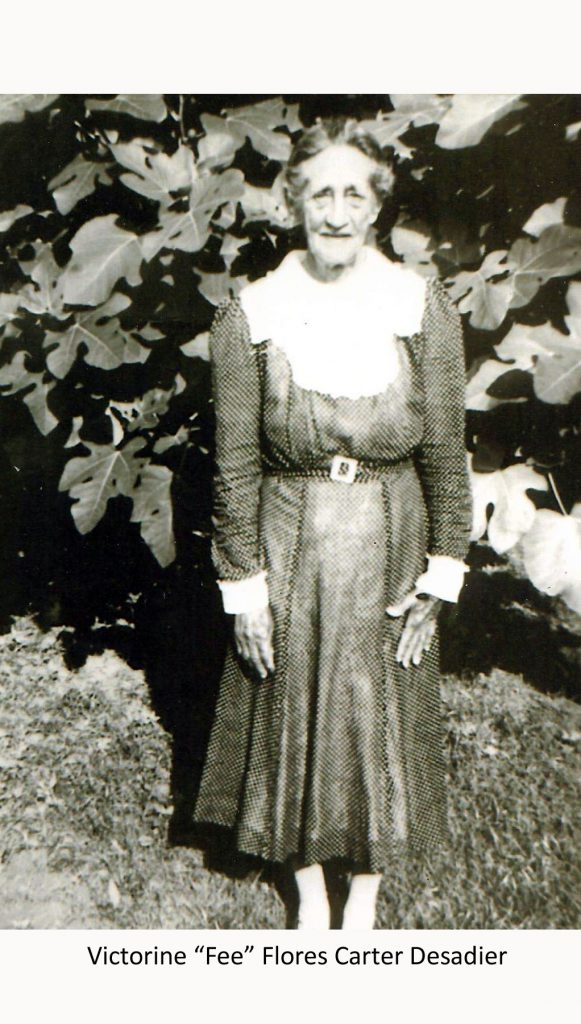
MARRIAGE
As Felix grew to be a young man, he met and married Theresa Thompson. Not much is known about Theresa, but they had one child. His second wife and life-long companion was Victorine “Fee” Flores. Fee was 15 years older than Felix and the widow of William Carter. Her marriage with Carter produced seven children. As Native American stories and fact go, Felix Desadier was Fee’s second cousin. Felix and Fee’s mother, Elizabeth Larenaudier were first cousins. So, as a norm in Native American culture, this marriage was a familial relationship that lasted until Felix’s death in 1926. Fee never remarried and died at the age of 108 in 1961.
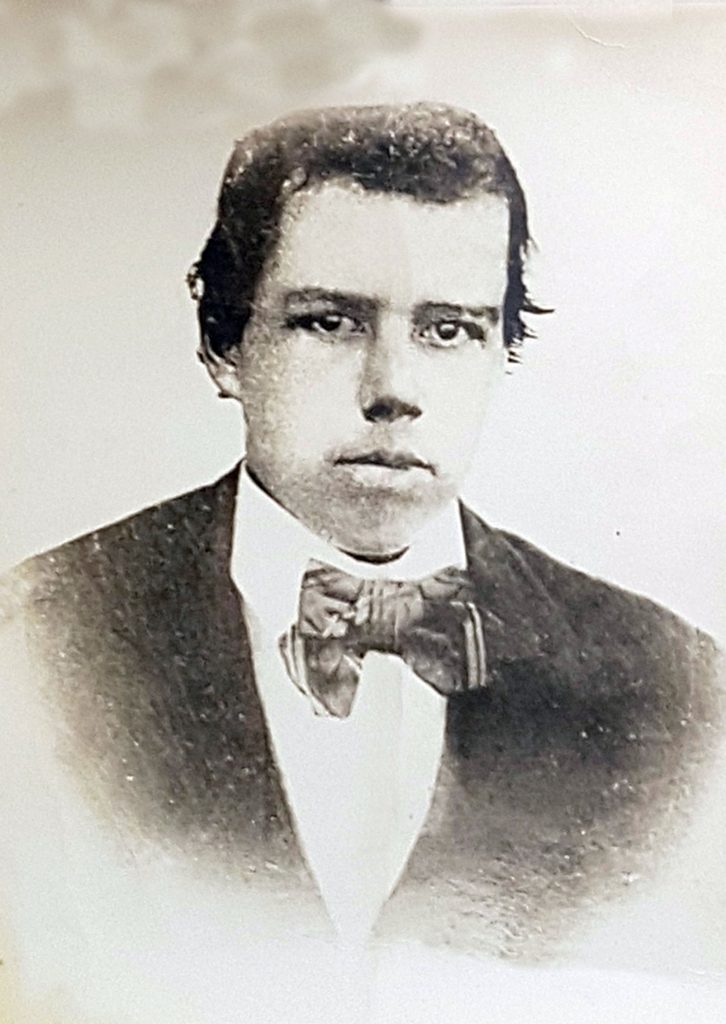
FAMILY LEADER
Felix was a wealthy man. He came into some money from San Antonio. Although it is not exactly known where his wealth came from, it is highly likely that he may have been involved in illegal cattle trade activities but this has not been proven. Felix and Fee lived a life of servitude to their family and their community throughout their marriage. They knew and understood too well what being tagged “Indian” meant in the United States. Family came first with them. Obviously, their skin tone was not white. Family children were not allowed in the “white” schools. Knowing that would be an issue with the segregated school systems, Felix’s father, Joseph Jr., had prepared for that when Felix was a child. Joseph had built the first school for the family children on the bayou, the Desadier School. During Joseph’s childhood, eight children were taken from the tribe to be taught the American ways and never seen again. They would always remember the children that never returned. The family would always be careful, be prepared, be watching.
Felix attended the old school that his father, Joseph Jr. built. By the time that Felix had become a man in 1905 and had his own family, the first schoolhouse was dilapidated Having a school that the family children could attend without having to be shipped off to another area was important to everyone, especially Felix. Not trusting the government with the care of the family children, Felix helped rebuild a new school near the old Desidere schoolhouse stood and where the present-day Pace Community Center stands.
Each morning before going to school, Felix’s children would milk the cows and do chores. In the summertime, all the children had to work in the fields and take care of the cattle, mules, hogs, and chickens. All of the grandchildren knew how to milk cows. The family was allowed to go to his barns and milk the cows whenever they needed to. Neighbors were also allowed to milk the cows when they were in need.
Everyday tribal life continued in the family regardless of whether one called the group a family or a tribe. Felix had the responsibility of feeding a large number of family units. The way that the family units ran in Bayou Bourbeaux is that everyone from children around 5/6 years of age up to the age of people who could work would do their part to put food on the table, clothes on the backs of the family, roofs over the heads and a bed to sleep on for everyone.
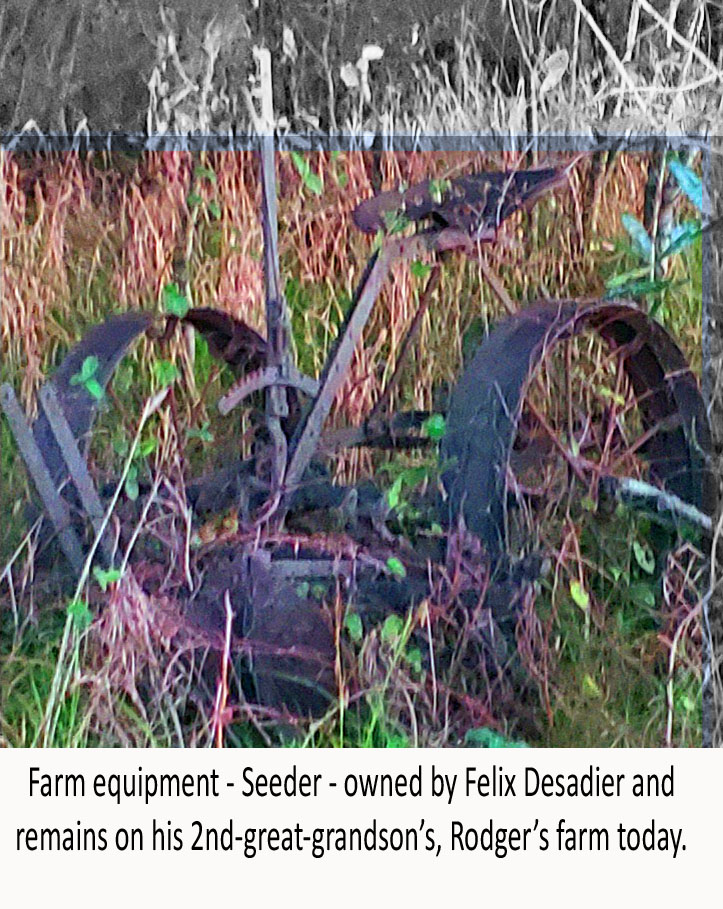
Felix was known as a specialized farmer in his era. After the Civil War in the South, slave labor was no longer allowed so farmer had to improvise. Cotton was still king in the South and fighting Johnson-grass in cotton fields was a major concern. As a child Felix raised geese that would follow him around the yard and pluck Johnson-grass right out from under his feet. That memory gave him and idea! He raised a flock of geese, drove them to the cotton fields, watched them pluck the Johnson-grass out of the cotton field at no cost and no-labor to the farmer, herded them back to the crib and locked them in for the night to protect them from coyotes or other predators. As Felix got older, he raised a little over two-hundred geese to help with his cotton.
Felix’s farm was also known for his fine-peach wine. He had a huge orchard that he took much pride in. His farmlands grew vegetables, grains and cotton which gave the family food and work.
Each month the entire bayou tribe/family would gather to travel to Natchitoches to sell seasonal farm products (grains, cotton, vegetables, wine, Spring-water, salt, etc.) and buy whatever supplies they might need, especially ammunition. In those days, the family would all have to ride the ferry across the river to Grand Ecore. One of the important products that the Butte family would sell was water from Jewel Springs close to Butte Hill. Jewel Springs was known as a healing springs in those days and people would pay for bottles of water that came from there. A few members who know the location of the springs still travel to the springs today to wash or drink from it.
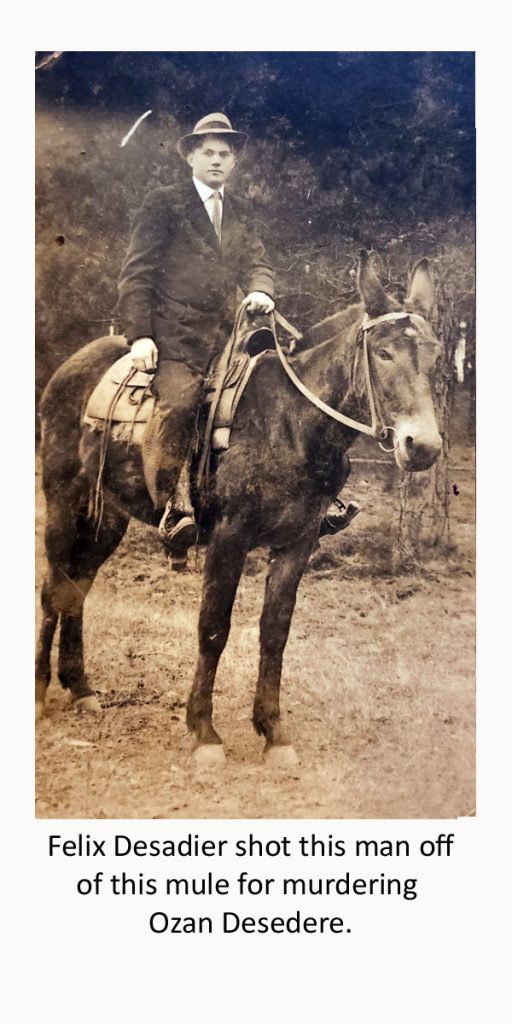
MURDER ON THE BAYOU
Years before July 5, 1905, Ozan Desadiere had left the Butte side of the bayou and moved to the Campti area when he married a Trichell cousin. On that night in 1905, Ozan was sitting at home with his family when he heard someone calling from outside. He walked to the front door and saw three men riding horses yelling out for help in the darkness. They needed him to bring a light outside to help them. Ozan hurried and did as he was asked. As soon as he stepped out on the porch with the light, he was shot dead by the men on horses.
As would be expected, word traveled fast on the bayou. Felix knew the men would be headed for Grand Ecore on the trail to escape to Texas. These men had been hanging around the area trying to buy up land for a while. He saddled his horse and headed up the trail to Grand Ecore where he waited in ambush for the murders. Sure enough, in attempt to get to Texas one of the three assailants road up the trail on a mule. Felix shot him off of the mule with buckshot but did not kill him. The man got away on foot. Felix took the mule home and kept him. The other two men were caught and taken to jail. Three weeks later, Felix got word that the man he shot made it to San Antonio and died of his wounds.
CHURCH
All Butte chiefs raised their children on the same land. Felix and Fee were no different. Their homeland is located in what is known today as the Pace Community. Bayou Bourbeaux runs straight through it. In the beginning of the 1900s, the family held church service on their land under a little brush arbor. That little brush arbor advanced to a family community brick church building named Christian Harmony Baptist Church in Natchitoches, Louisiana. The land that the church and parsonage sit on today was donated by Felix, Fee and Clarence Desadier. Throughout the years, numerous additions and upkeeps have been added to by the current chief, Rodger Collum and his wife, Charlia, as well as other family members. *Note: The Pace bloodline mixed with the Butte bloodline through, Josephine Desadier, Felix Desadier’s youngest daughter.
DEATH OF A GREAT CHIEF
Felix was a working man. It was not enough for him to give orders for others to do a job. He always had to be a part of the jobs that were going on. One of his favorite things to do was to work in his orchards and make wine. One day he fell from a pear tree. That fall led to a punctured spleen and a long and painful death. Felix was bed-ridden for a long time during his illness. He was carried by sled to Jewel Springs several times and washed in the healing waters in hopes of a cure.
Chief Adolf Felix Desadier was cut short at the age of 56 on December 26, 1926. He left his son, Chief Clarence Desadier, to carry on and lead the family.
Next, Chief Joseph Desadier Jr, 3rd Chief of Butte Tribe of Bayou Bourbeaux
